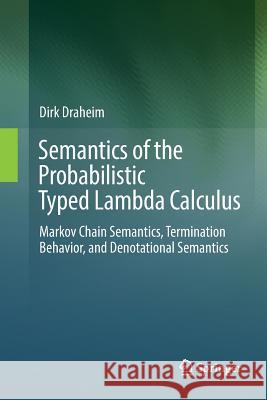Semantics of the Probabilistic Typed Lambda Calculus: Markov Chain Semantics, Termination Behavior, and Denotational Semantics » książka
topmenu
Semantics of the Probabilistic Typed Lambda Calculus: Markov Chain Semantics, Termination Behavior, and Denotational Semantics
ISBN-13: 9783662568729 / Angielski / Miękka / 2018 / 218 str.
Semantics of the Probabilistic Typed Lambda Calculus: Markov Chain Semantics, Termination Behavior, and Denotational Semantics
ISBN-13: 9783662568729 / Angielski / Miękka / 2018 / 218 str.
cena 461,56 zł
(netto: 439,58 VAT: 5%)
Najniższa cena z 30 dni: 459,42 zł
(netto: 439,58 VAT: 5%)
Najniższa cena z 30 dni: 459,42 zł
Termin realizacji zamówienia:
ok. 20 dni roboczych.
ok. 20 dni roboczych.
Darmowa dostawa!
Kategorie:
Kategorie BISAC:
Wydawca:
Springer
Język:
Angielski
ISBN-13:
9783662568729
Rok wydania:
2018
Wydanie:
Softcover Repri
Ilość stron:
218
Waga:
0.32 kg
Wymiary:
23.39 x 15.6 x 1.22
Oprawa:
Miękka
Wolumenów:
01
Dodatkowe informacje:
Wydanie ilustrowane











